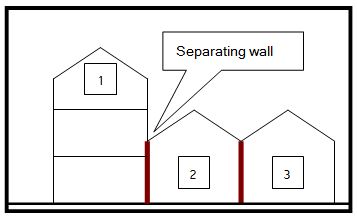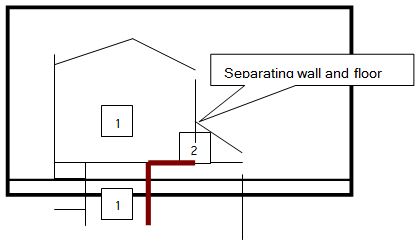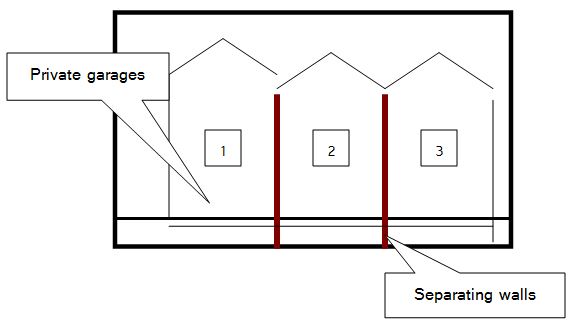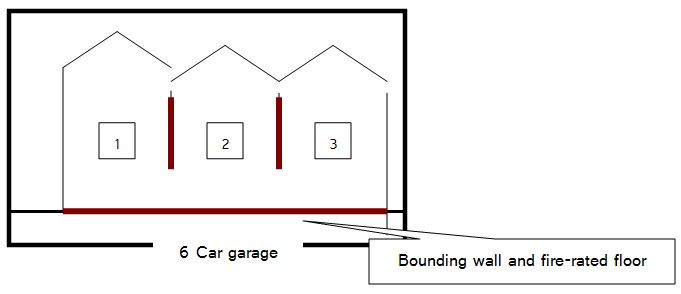Classification of a building is of paramount importance for the viability of a project. Getting it right from the start will ensure you are not over or under-specifying your buildings. Large developments are sometimes classified incorrectly as Class 2 based on the scale, instead of the actual definition of the buildings of the development. This can cause problems with higher fire and other compliance requirements of Volume 1 of the BCA (the volume for Class 2 to 9 buildings).
The classification of multi-residential developments does not depend on the number of units proposed but the design. The simple way of determining the classification of residential buildings is by checking whether a wall or a floor separates each dwelling.
Regardless of how many units there are, or how many storeys each unit contains, separation by a wall means they are Class 1a buildings. As in Figure 1, there is a three storey buildings with two single storey buildings. This is a Class 1a development. Any number of single, double or tri-level dwellings can be built in a cluster, and are still defined as Class 1a.

Figure 1 – Class 1 buildings
On the other hand, in a small development such as that illustrated in Figure 2 with only two dwellings, where the separation between the occupancies is dependant on both a wall and a floor, both units are required to meet Class 2 requirements.

Figure 2 – Class 2 buildings
Figures 3 and 4 show how ground level garages can complicate the classification of residential buildings. A private garage is a defined term in the BCA (shown in italics and referenced in the introductory Section of each volume). A private garage (Class 10a) only accommodates 3 vehicles or less.
In Figure 3, each private garage houses two vehicles. In this case, the residential units are appurtenant to the garages below thus allowing each dwelling or occupancy to be separated by walls, and allowing the residential part to be classified as Class 1a building.

Figure 3 – Class 1a and 10a buildings
A garage area accommodating more than 3 vehicles no longer fits the definition in the BCA of a private garage, and is then classified as a Class 7a carpark. This also impacts the residential part, so the associated dwellings are Class 2.

Figure 4 – Class 2 and 7a buildings
For further information, Master Builders members can contact our Technical Adviser: romina@mbawa.com

Can you please tell me what defines a storey in class 1a, there is no reference in volume 2. I’m currently trying to submit a split level home which has a single carport space below the home. this is an open space. council are viewing this as 2 storey
Hi Andrew,
Thank you for contacting Master Builders.
The best thing to do would be to contact the Building Commission to seek advice. Their contact details are below;
Phone: 1300 489 099
Email: bcinfo@commerce.wa.gov.au.
Website: https://www.commerce.wa.gov.au/building-commission
Kind regards,
Master Builders